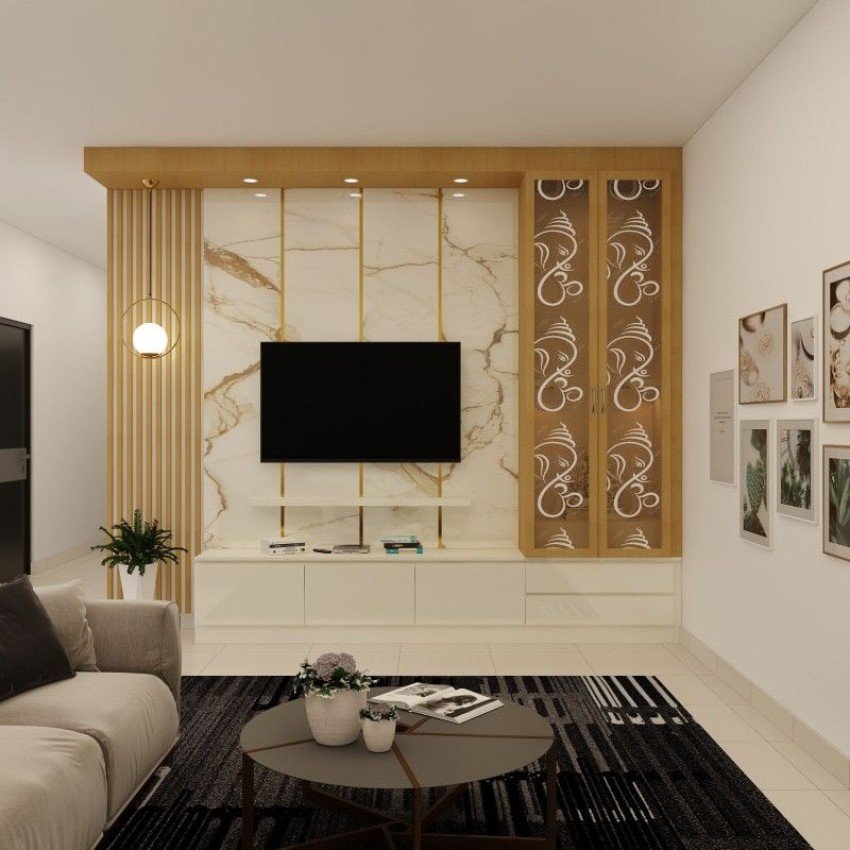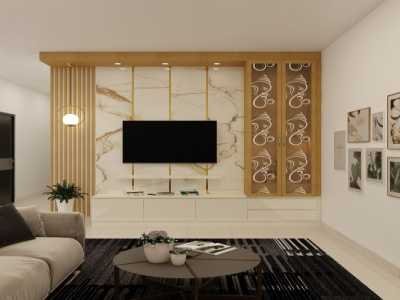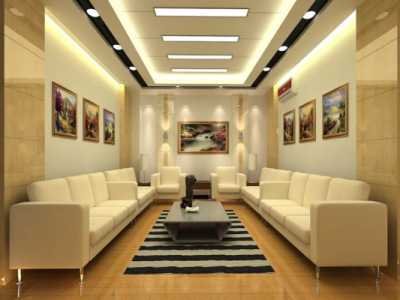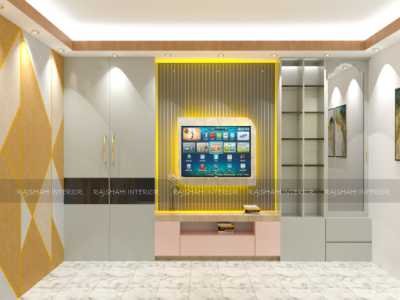Modern interior design emphasizes a blend of form and function with simplicity and clean lines. It often involves a muted color palette and the use of materials such as metal, glass, and steel.
Interior design has evolved to become a critical aspect of creating functional and aesthetically pleasing living spaces. Modern interior design showcases the beauty of space, harmonious color combinations, and the importance of organization and minimalism. Iconic furniture, crisp and geometric shapes, and a preference for monochrome tones are key characteristics that define this style.
This design philosophy not only reflects the trends of the present but also integrates the innovations and technologies that simplify daily living. With an ever-increasing focus on sustainability, eco-friendly materials and energy-efficient practices are also becoming integral to modern interior design strategies. Implementing these design elements can transform any space into a contemporary haven that is both visually compelling and comfortably liveable.
?Modern Interior Design?
 Evolving Aesthetics Of Modern Interior Design
Evolving Aesthetics Of Modern Interior Design
The world of modern interior design is forever in motion, constantly transforming with the times. As we progress further into the 21st century, interior aesthetics are not just about the visual appeal but also about functionality, comfort, and personal expression. The latest trends in design present a fusion of innovative materials, smart home technology, and a lean towards minimalism, shaping spaces that are both chic and livable.
Influence Of Technological Advancements
Technology has prominently influenced modern interior design. The emergence of smart home devices and automation systems has revolutionized the way spaces interact with inhabitants. Now, elements of design serve more than their visual purpose; they enhance the quality of living.
- LED lighting systems not only save energy but also allow for dynamic ambiance control.
- Home assistant devices streamline daily tasks, embedding convenience into the fabric of the home.
- Virtual reality allows for immersive previews of designs before implementation.
Shift From Traditional To Minimalist Styles
The drift from traditional to minimalist style stands out as a signature evolution in modern interior design. Spaces are becoming decluttered, adopting a 'less is more' philosophy.
Clean lines, neutral color palettes, and open floor plans dominate, mirroring the lifestyle shift toward simplicity. This minimalist approach not only adds an air of sophistication but also highlights functional aspects of design.
| Traditional Design |
Minimalist Modern Design |
| Ornate elements |
Simplified forms |
| Bold patterns |
Subdued hues |
| Heavy textures |
Smooth finishes |
Key Principles Guiding Contemporary Spaces
Modern interior design is a dance between form and function. It's where aesthetics meet simplicity. This article unveils the essential principles defining this style. Each principle shapes spaces that feel 'now'.
Simplicity And Functionality
The mantra of modern design is less is more. Rooms breathe with uncluttered simplicity. Furniture with clean lines and practical use rules. Think multipurpose elements, like ottomans with storage. This isn't just a design choice; it's a way of life.
- Clutter-free surfaces
- Storage that doubles as decor
- Minimal accessories for a tidy look
Emphasis On Lines And Form
Straight, sleek lines carve out contemporary spaces. Geometric shapes star in art pieces and textiles. Curves, when present, are clean and free-flowing. These design elements lead the eye across the room creating visual interest.
| Feature |
Example |
| Lines |
Minimalist furniture, graphic art |
| Forms |
Geometric lights, circular mirrors |
Open Spaces And Natural Light
Natural light is crucial for a modern look. It highlights clean lines and colors. Open floor plans enhance this light, making spaces feel larger. Think big windows and fewer walls.
- Use large windows for more sunlight
- Choose open layouts to connect areas
- Create a blend of indoor and outdoor living
Material And Color Trends In Modern Interiors
Modern interior design blends aesthetics with functionality. Discover the latest trends in materials and colors to create standout spaces. An informed choice of materials and hues can transform your home into a contemporary masterpiece.
Popular Materials in Contemporary Design
Popular Materials In Contemporary Design
The current design landscape showcases a mix of organic and synthetic elements. This balance speaks to a desire for both comfort and innovation. Explore the materials at the forefront of today’s trends:
- Sustainable Wood: Natural texture promotes environmental awareness.
- Polished Concrete: Provides an urban, minimalist appeal.
- Metal Accents: Add a touch of industrial chic.
- Terrazzo: Brings playful patterns through composite material.
- Recycled Glass: Offers a commitment to sustainability.
Color Palettes Defining Modern Spaces
Color Palettes Defining Modern Spaces
Color has the power to define the vibe of a room. Modern interiors often feature a harmonious blend of neutral tones and bold accents. Consider the following palette trends that capture the modern spirit:
| Neutral Base |
Accent Colors |
| Soft Whites |
Deep Blues |
| Warm Grays |
Energizing Yellows |
| Beige Tones |
Lush Greens |
| Charcoal Black |
Rich Reds |
Together, these colors contribute to a fresh, inviting space. They merge warmth with modern sophistication. Introduce these pairings to infuse your interiors with current style.
Integrating Smart Home Technology
Modern interior design has leaped into the future with smart home technology. Homes are not just stylish spaces any more. They respond to voice commands and learn from daily routines. This blend of design and technology elevates comfort and convenience.
Automation For Enhanced Living
Imagine stepping into a living space that adapts to your preferences. Automation makes this a reality. Lights, temperature, and even window shades can adjust automatically. Picture a thermostat that knows to warm your home before you arrive. Or lights that dim to create a perfect movie night ambiance. These solutions embody smart living.
- Programmable thermostats improve energy efficiency
- Motion-sensor lights enhance security
- Automated curtains offer privacy on demand
Smart Furniture And Appliances
With smart furniture and appliances, your home not only looks good but also thinks smart. Couches that charge your devices and fridges that help plan meals are just the start. Here are some game-changers:
| Smart Furniture |
Smart Appliances |
| Tables with built-in speakers |
Ovens you can control with an app |
| Desks that remind you to stand |
Washing machines that order detergent |
| Beds that track sleep patterns |
Fridges that suggest recipes based on contents |
Smart features make everyday tasks easier. Cooking, cleaning, and even sleeping become experiences tailored to your lifestyle. Your home is not just a space, it's a personal assistant.
Sustainable Practices And Eco-friendly Design
Sustainable practices and eco-friendly design are not just trends. They are ways to protect our planet. Designers choose materials that are good for the Earth. People enjoy spaces that make them feel connected to nature. Let's explore how modern interior design does this.
Incorporating Green Elements
Incorporating Green Elements
Greenery inside adds life to spaces. It cleans the air. Plants make people happy. Think vertical gardens and potted plants.
- Indoor plants - They bring nature indoors.
- Living walls - They add beauty and filter the air.
- Natural light - It saves energy. It feels good.
Skylights and large windows help too. They reduce the need for artificial lighting.
Sustainability in Materials Selection
Sustainability In Materials Selection
Choosing the right materials is key. Sustainable materials last long. They cause little harm to the environment.
| Material |
Why It's Eco-Friendly |
| Bamboo |
Grows fast and is durable. |
| Recycled Metal |
Less waste in landfills. |
| Reclaimed Wood |
Prevents deforestation. |
Use materials with low volatile organic compounds (VOCs).
This improves indoor air quality. People stay healthy. The Earth smiles.
Challenges And Considerations In Modern Design
Crafting the perfect modern space involves more than just following the latest trends. It's a delicate dance of form, function, and personal style. The right approach involves several key challenges and considerations. Designers and homeowners alike must think of the space holistically to achieve a balance that feels both innovative and enduring.
Balancing Trends With Timelessness
Striking the right balance between trendy and timeless is no small feat. Modern interior design is dynamic, catching eyes with new patterns, textures, and colors. Yet, it must remain appealing over time.
- Identify elements that have stood the test of time.
- Aim for clean lines and neutral palettes as a foundation.
- Use trendy accents that can be easily updated.
Adapting Designs For Diverse Lifestyles
A design that looks great in a magazine might not fit the day-to-day. Modern design must adapt to diverse lifestyles. This means considering functionality alongside aesthetics.
| Lifestyle Needs |
Design Adaptation |
| Busy family life |
Durable materials, easy-to-clean surfaces |
| Space for entertaining |
Open layouts, adaptable furniture |
| Work-from-home setups |
Integrated office space, ergonomic features |
Frequently Asked Questions On Modern Interior Design
What Is The Modern Interior Design Style?
Modern interior design emphasizes a sleek, clutter-free aesthetic with clean lines, minimalistic furnishings, and a neutral color palette, often accented with bold color splashes and contemporary artwork. It focuses on simplicity and function.
What Are The Characteristics Of Modern Interior Design?
Modern interior design features clean lines, minimalism, functional spaces, and a neutral color palette. It often incorporates natural light, open floor plans, and innovative materials, as well as technological elements for smart living.
How Do I Design My Home With Modern Interior Style?
To design your home with a modern interior style, embrace minimalism and neutral color palettes. Incorporate clean lines and functional furniture. Use statement lighting and textured accents. Opt for open spaces with abundant natural light. Lastly, select contemporary art pieces for a sleek finish.
What Is Modernism In Interiors?
Modernism in interiors embraces minimalism, functional design, and streamlined forms. It often features a neutral color palette, natural light, and uncluttered spaces with a focus on simplicity and innovation.
Conclusion
Embracing modern interior design enriches living spaces with style and functionality. It's about blending form with practicality, crafting environments that resonate with personal tastes while remaining timeless. Remember, a touch of innovation can transform your home into a masterpiece of contemporary elegance.
Start reimagining your space to reflect the latest in design trends.












